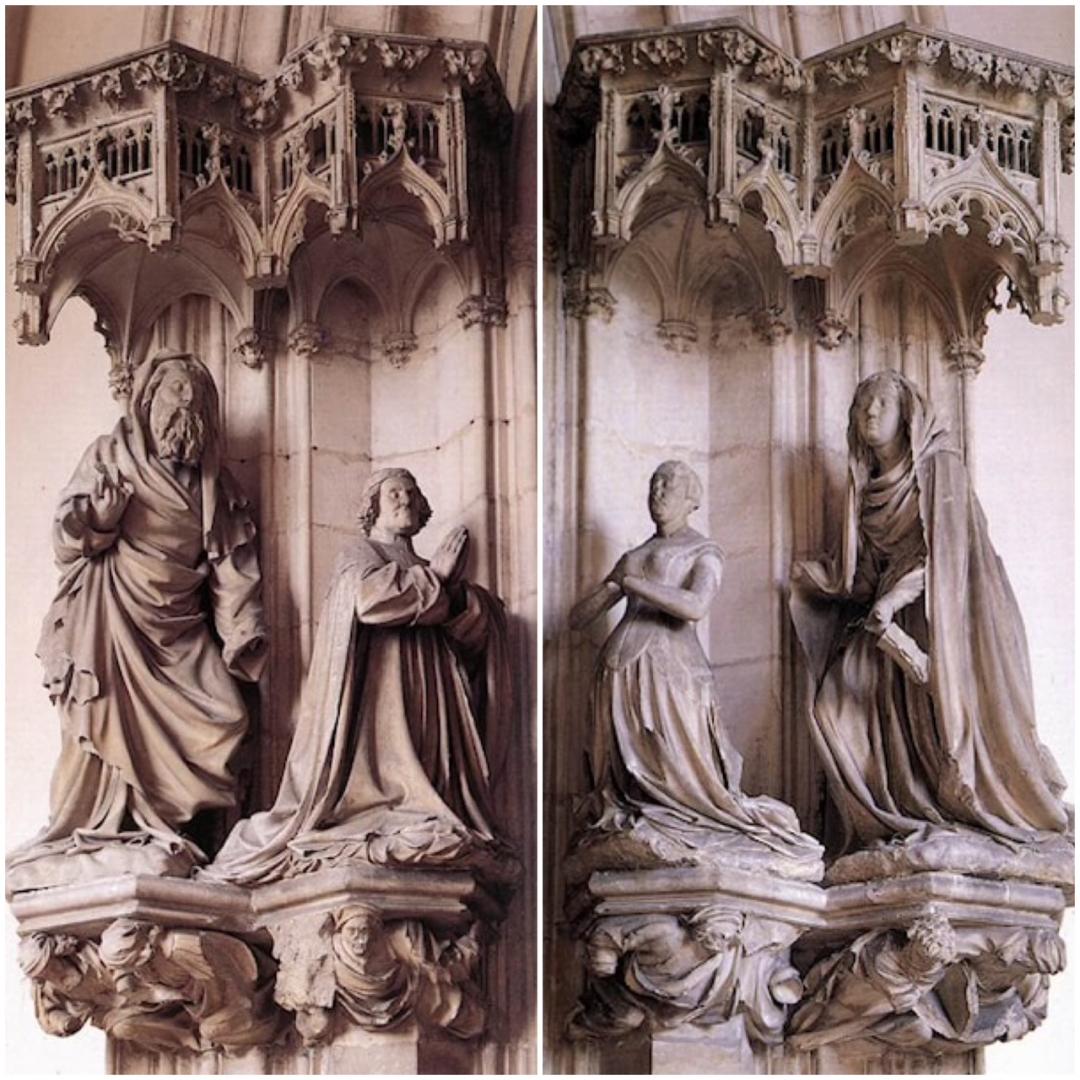Gothic Style Art Movement: Exploring the Dark Elegance of Medieval Art

Let’s journey back to the birth of Gothic art, discover its key artists and masterpieces, and understand how this influential movement resonates even in modern times, especially as we embrace the haunting allure of Halloween.
—> What is Gothic Art? <—
Gothic art began in 12th-century France and spread across Europe, dominating the artistic landscape until the 16th century. It was a period marked by religious fervor, a fascination with the divine, and a desire to evoke the majesty and mystery of the spiritual world. Gothic art was largely tied to the Catholic Church, which used it as a vehicle to communicate religious stories, express devotion, and create spaces that would inspire awe and reverence.
The Gothic style is most famous for its architecture—think towering cathedrals with pointed arches, flying buttresses, and massive stained glass windows. But it wasn’t just buildings that were shaped by this movement. Gothic art also includes sculpture, painting, and manuscript illumination, all of which share common characteristics: heightened emotion, delicate detailing, and a focus on spiritual themes.
*** Key Characteristics of Gothic Art ***
-- Spiritual and Religious Themes: Gothic art was deeply religious, with most works focusing on biblical stories, saints, and the life of Christ. The goal was to inspire devotion and reflect the glory of God.
-- Emphasis on Emotion: Unlike the more restrained Romanesque art that preceded it, Gothic art is known for its emotional expressiveness. Sculptures and paintings often depict exaggerated facial expressions and gestures to convey deep feelings like sorrow, ecstasy, or piety.
-- Intricate Detailing: Whether in architecture, sculpture, or manuscript illumination, Gothic artists were known for their detailed craftsmanship. Cathedrals were adorned with intricate carvings, stained glass windows depicted elaborate scenes, and illuminated manuscripts featured meticulously detailed illustrations.
-- Light and Darkness: Gothic architecture is famous for its large windows that filled cathedrals with colored light, creating a dramatic contrast between light and shadow. This play between brightness and gloom is echoed in many Gothic paintings and sculptures, adding to the overall sense of mystery.
~~~ Famous Artists and Iconic Works of Gothic Art ~~~~
Though the Gothic art movement was often dominated by anonymous craftsmen and artists working for the Church, a few key figures and masterpieces stand out as representative of this profound period.
(1.) Abbot Suger and the Birth of Gothic Architecture
While not an artist in the traditional sense, Abbot Suger is often credited with the birth of Gothic architecture. In the 12th century, Suger oversaw the reconstruction of the Basilica of Saint-Denis near Paris. He introduced many of the architectural innovations that would define Gothic style—pointed arches, ribbed vaults, and stained glass windows. His vision was to create a “heavenly light” inside the church, symbolizing the divine presence. This concept of luminosity became central to Gothic cathedrals across Europe.
http://scihi...gothic-style/
(2.) Giotto di Bondone (1267-1337)
Though often considered a precursor to the Renaissance, Italian painter Giotto was heavily influenced by the Gothic style. His frescoes, particularly in the Scrovegni Chapel in Padua, display an emotional intensity and narrative clarity that was groundbreaking for its time. Giotto’s figures are more naturalistic than earlier Gothic works, but they still possess the emotional depth and spirituality that define the movement.
https://www....to-di-Bondone
(3.) Claus Sluter (1350-1406) (Artwork, shown above)
Claus Sluter, a Dutch sculptor, is known for his dramatic and detailed works that exemplify Gothic sculpture at its height. His masterpiece, the Well of Moses (1395-1406) in the Carthusian monastery of Champmol, depicts life-sized biblical figures, each with deeply expressive faces and finely detailed robes. The Well of Moses is celebrated for its ability to convey emotion and humanity through stone, making it a quintessential Gothic sculpture.
https://www....s-sluter/2634
(4.) Notre-Dame de Paris
No discussion of Gothic art would be complete without mentioning the iconic Notre-Dame Cathedral in Paris. Built over two centuries, Notre-Dame is a masterpiece of Gothic architecture, featuring flying buttresses, detailed sculptures, and stunning stained glass windows like the famous Rose Window. This architectural marvel is a perfect example of how Gothic artists sought to create awe-inspiring spaces that blended the spiritual with the artistic.
https://www....me-cathedral/
(5.) The Très Riches Heures of the Duke of Berry
An illuminated manuscript created by the Limbourg brothers in the early 15th century, the Très Riches Heures is considered one of the finest examples of Gothic manuscript illumination. Commissioned by the Duke of Berry, this book of hours features stunningly detailed miniature paintings that depict both religious scenes and everyday life. The use of vivid color, intricate patterns, and fine detailing makes this manuscript a prime example of Gothic artistry in book form.
https://smar...duc-de-berry/
Share Come Paint Some Spooktacular Art! | View ALL Of Our Classes

